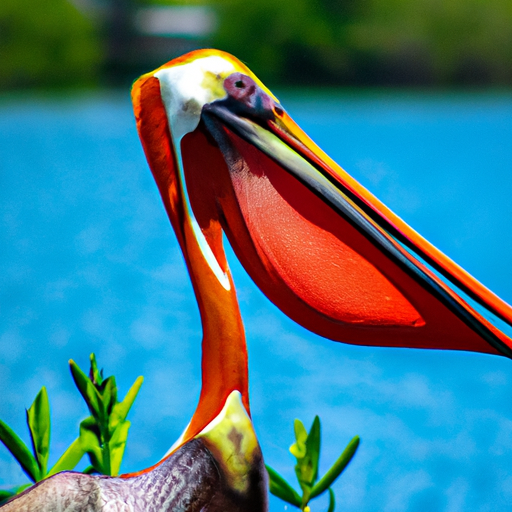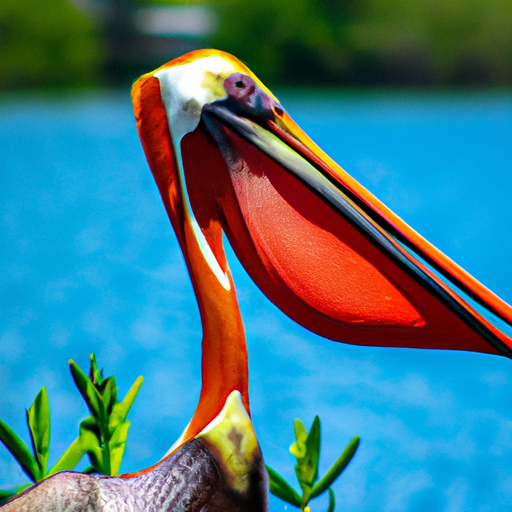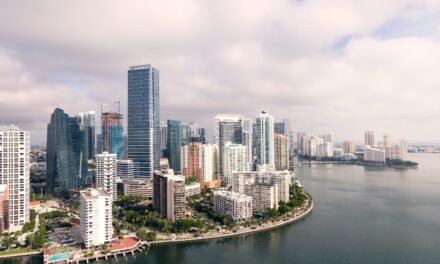Do you ever wonder what kind of wildlife you can find in Miami? Well, let me tell you, there’s a vibrant array of creatures waiting to be discovered! From the beautiful beaches to the lush Everglades, Miami is home to a diverse range of wildlife that will surely captivate your senses.
When exploring the city, keep an eye out for adorable manatees gracefully swimming in the warm waters. These gentle giants are a true symbol of Florida’s natural wonders. If you venture into the Everglades, get ready to meet some wild alligators lurking in the marshes. But don’t worry, they usually keep their distance. Along the shores and in the skies, you’ll spot an impressive variety of birds, including herons, ibises, and even the iconic flamingos. And if you’re lucky, you might catch a glimpse of playful dolphins leaping through the waves. So, grab your binoculars and camera, and prepare to be amazed by the incredible wildlife that awaits you in Miami! Miami is not only a vibrant and bustling city, but it is also home to a diverse array of wildlife. From beautiful birds to fascinating reptiles, Miami offers a wide range of natural wonders for you to explore. In this article, we will take a closer look at the various types of wildlife you can encounter in this sunny paradise.
Birds
Miami is a haven for bird enthusiasts, with its diverse ecosystems attracting a wide variety of feathered creatures. One particular group of birds that is commonly spotted along Miami’s shores are shorebirds. These birds can be found wading along the sandy beaches, searching for food in the shallow waters. Some common shorebird species you may encounter include sandpipers, plovers, and herons.
Another group of birds that make Miami their temporary home is migratory birds. These birds travel long distances during specific times of the year to find suitable breeding grounds or warmer climates. Miami’s location along the Atlantic Flyway makes it a favored stopover for many migratory species, such as warblers, thrushes, and hawks. Keep your eyes peeled during these migration seasons to witness the awe-inspiring sight of these winged travelers.
Water birds are another group that frequents the Miami area. These birds are adapted to aquatic habitats and can be found in and around bodies of water such as lakes, rivers, and wetlands. Some examples of water birds you may spot in Miami include ducks, herons, egrets, and pelicans. These beautiful creatures are a delightful sight as they glide effortlessly across the water or dive for their next meal.
For avid bird watchers, there are several birding hotspots in Miami that offer excellent opportunities for spotting a wide variety of bird species. Places like the Everglades National Park, Biscayne Bay, and Fairchild Tropical Botanic Garden are known for their rich avian diversity. Grab your binoculars and venture out during early mornings or late afternoons for the best chances of catching glimpses of these magnificent creatures in their natural habitat.
Marine Life
Miami is renowned for its stunning beaches and crystal-clear waters, making it a paradise for marine life. The warm ocean waters host various species, including mesmerizing marine mammals. Dolphins are frequently spotted dancing through the waves, their playful nature captivating onlookers. These intelligent creatures bring joy and wonder to anyone lucky enough to witness their acrobatic displays.
Fish also abound in Miami’s coastal waters, with a wide range of species inhabiting both reefs and deeper offshore areas. Snorkeling or scuba diving along the vibrant coral reefs provides a breathtaking opportunity to observe colorful tropical fish, such as angelfish, parrotfish, and butterflyfish. If you venture further out, you may even encounter larger species like groupers, snappers, or barracudas.
Sea turtles are also an important part of Miami’s marine ecosystem, with nesting sites scattered along its shores. The most common sea turtle species found in Miami is the loggerhead turtle, known for their distinctive reddish-brown shells. These gentle giants travel great distances to lay their eggs on Miami’s beaches, a delicate and awe-inspiring process.
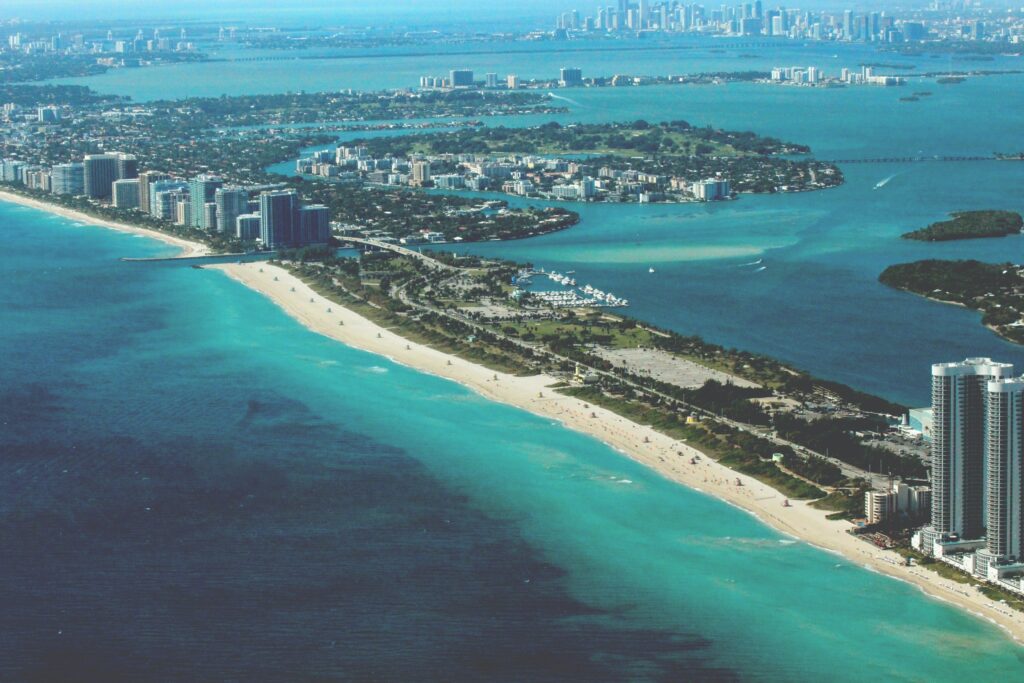
Reptiles and Amphibians
As a subtropical region, Miami is home to an assortment of reptiles and amphibians. One iconic resident is the American alligator, a formidable creature that can be found in the swamps, marshes, and canals of the Everglades. These prehistoric reptiles serve as a reminder of Miami’s unique and wild environment.
Another reptile commonly encountered in Miami is the green anole, a small lizard known for its ability to change color. These agile creatures can be found perched on branches and fences, showcasing their vibrant green hues or changing to subtle shades of brown to blend into their surroundings.
The brown anole is another species of lizard that is prevalent in Miami. Originating from Cuba and the Bahamas, these adaptable lizards have thrived in the warm climate of South Florida. With their bold brown coloration and amusing head bobs to establish dominance, they have become a familiar sight in Miami’s urban and natural areas alike.
One amphibian that has proliferated in Miami is the Cuban treefrog. This invasive species has spread throughout the region and can often be heard calling during the night. Their distinct calls fill the warm summer air, adding a touch of nature’s soundtrack to Miami’s evenings.
While reptiles like the Eastern diamondback rattlesnake and southern copperhead can also be found in Miami, it’s important to remember to admire them from a safe distance. These venomous snakes play an essential role in the ecosystem, and encountering them in the wild is a reminder of the delicate balance of nature.
Mammals
While Miami may not be known for its large land mammals, it is still home to some fascinating and charismatic creatures. One such animal is the raccoon, a small mammal known for its intelligence and resourcefulness. These clever creatures can often be seen exploring urban areas in search of food, sometimes even rummaging through trash cans in their quest for a meal.
Another mammal that has adapted well to Miami’s urban environment is the Norway rat. These rats are commonly found throughout the city, utilizing the infrastructure and resources provided by human settlements. Though often regarded as pests, they nevertheless contribute to the city’s wildlife diversity.
In the more natural areas of Miami, you may come across marsh rabbits. These small, brown rabbits are well-adapted to wetland habitats and can be seen hopping among the tall grasses or taking cover in the dense vegetation. Keep your eyes peeled when exploring Miami’s wetlands for a chance to spot these elusive creatures.
For those fortunate enough to venture into the deeper parts of Miami’s wilderness, encountering a bobcat is a rare and thrilling experience. These elusive felines are highly adapted predators, stalking their prey with stealth and grace. If you happen to glimpse one of these majestic creatures, consider yourself truly lucky.
Lastly, the Virginia opossum is a notable mammal that can be found in Miami. These unique creatures are the only marsupials found in North America, carrying their young in a pouch. Opossums play an important role in Miami’s ecosystem as scavengers, helping to keep the environment clean by consuming carrion and pests.

Insects
Insects are abundant in Miami’s warm and humid climate, with a wide variety of species occupying different niches. Butterflies, with their vibrant colors and delicate wings, are a common sight in Miami’s gardens and green spaces. These mesmerizing creatures flit from flower to flower, pollinating plants as they go.
Dragonflies, with their shimmering iridescent bodies, are another insect group that can be observed in Miami. These skillful fliers are often found near bodies of water, where they hunt for small insects in mid-air. Observing dragonflies in action is a treat for any nature lover.
Bees are crucial pollinators in Miami’s ecosystems. These industrious insects tirelessly collect nectar and pollen as they visit an array of blossoms, helping to ensure the survival of countless plant species. Bees are vital for maintaining the balance of Miami’s flora and fauna.
While mosquitoes can be an annoyance in Miami’s warmer months, they are an integral part of the ecosystem as a food source for many bird and aquatic species. Their presence also serves as a reminder of the delicate interconnections within nature.
One troublesome insect species that has made its way to Miami is the invasive fire ant. These small but aggressive ants are known for their painful stings and destructive behavior. It is important to be cautious when encountering fire ant colonies to avoid any unpleasant encounters.
Plants and Trees
Miami’s lush vegetation is woven into the fabric of its landscape and provides valuable habitat for a wide range of species, including birds and insects. Banyan trees, with their unique aerial roots and sprawling branches, are a distinctive sight in Miami’s parks and neighborhoods. These majestic trees provide shade and shelter to a variety of creatures and create a picturesque backdrop for the city.
Palm trees, known for their slender trunks and iconic fronds, are synonymous with tropical environments. Miami is dotted with different species of palms, each contributing to the city’s distinctive skyline and offering a taste of paradise to residents and visitors alike.
Mangroves play a crucial role in Miami’s coastal ecosystems, helping to protect the shoreline from erosion and providing valuable nursery habitats for fish and other aquatic life. These salt-tolerant trees have adapted to thrive in the brackish water found in Florida’s coastal regions, making them an essential part of Miami’s natural heritage.
Orchids, with their vibrant blooms and intricate beauty, are a botanical treasure of Miami. These delicate flowers can be found nestled among the trees in Miami’s parks and gardens, offering a touch of elegance and exotic allure.
Gumbo limbo trees, also known as “tourist trees” due to their peeling reddish bark, are another noteworthy species found in Miami. These trees have a rich cultural significance, with Native Americans historically using their sap for medicinal purposes. Today, these trees provide shade and serve as a symbol of Miami’s unique natural heritage.
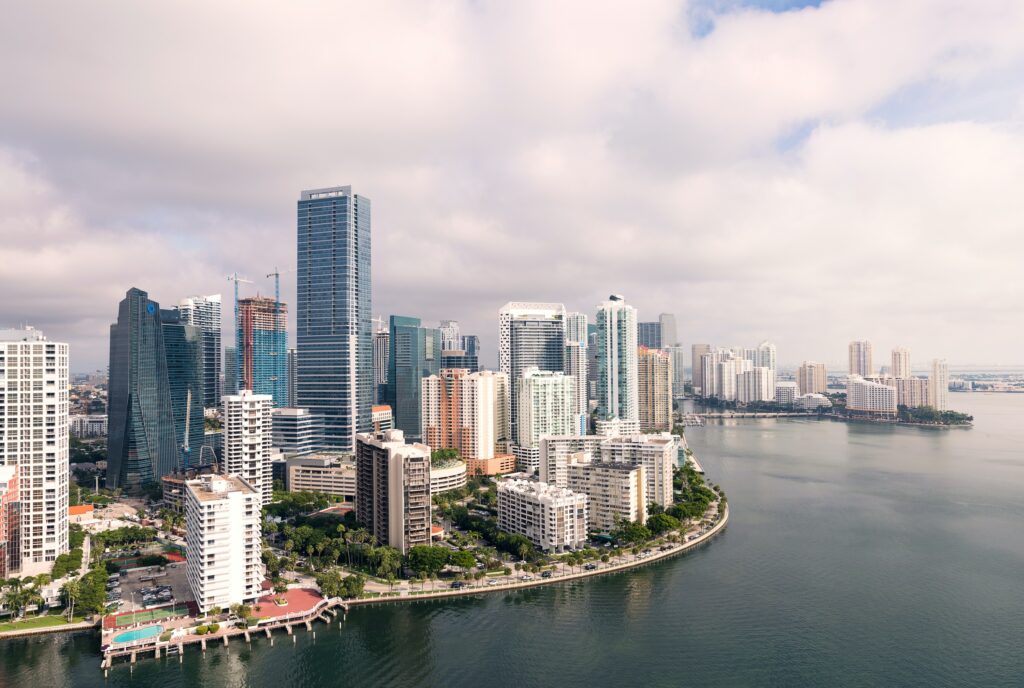
Freshwater Life
While Miami is best known for its coastal ecosystems, it also boasts diverse freshwater habitats that support various forms of life. Largemouth bass, prized by anglers, are a common sight in Miami’s lakes and canals. These predatory fish can grow to impressive sizes and are known for their strong fighting abilities.
Gulf sturgeon, a prehistoric-looking fish, can also be found in Miami’s freshwater systems. These large fish, with their armored bodies and long snouts, are known for their occasional leaping behavior, adding a touch of excitement to encounters with these ancient creatures.
Manatees, also known as sea cows, are gentle giants that inhabit Miami’s rivers and canals. These herbivorous mammals are a favorite among wildlife enthusiasts, with their slow and graceful movements captivating observers. Spotting a manatee surfacing for a breath of air is a memorable experience that connects you to the wonders of Miami’s freshwater ecosystems.
Freshwater turtles, with their hard shells and distinctive features, are another group found in Miami’s lakes and wetlands. From the striking red-eared slider to the charismatic Florida softshell turtle, these reptiles add a touch of charm to Miami’s freshwater habitats.
Freshwater snails, though small and often unseen, are important indicators of water quality and play a vital role in the ecosystem. These little creatures are part of the delicate balance that ensures the health and vitality of Miami’s freshwater ecosystems.
Invasive Species
Invasive species can have a significant impact on ecosystems by outcompeting native species and disrupting established ecological relationships. Burrowing owls, originally from the western United States, have made themselves at home in Miami’s open spaces, including parks and golf courses. These small yet captivating owls are known for their habit of nesting in underground burrows, providing a unique sight for wildlife enthusiasts.
Burmese pythons, originating from Southeast Asia, have become a notorious invasive species in Florida, including the Miami area. These large constrictor snakes pose a threat to native wildlife, preying on a variety of mammals and birds. Efforts are underway to manage their population and protect Miami’s native flora and fauna.
Lionfish, with their strikingly beautiful appearance, have become a problematic presence in Miami’s coastal waters. Originally from the Indo-Pacific, these venomous fish were introduced to the Atlantic through aquarium releases. Their rapid reproduction and voracious appetite pose a threat to native fish populations and coral reefs.
Cuban treefrogs, though previously mentioned under reptiles and amphibians, are worth noting as an invasive species. These nocturnal amphibians have established populations in Miami and can be heard calling loudly during the breeding season. Their successful invasion demonstrates the challenges of managing and controlling introduced species.
Another invasive reptile in Miami is the green iguana. These large lizards, known for their bright green color and impressive size, have established themselves in South Florida’s subtropical climate. While captivating to observe from a distance, their presence raises concerns about their impact on native vegetation and competition with local wildlife.

Endangered Species
Miami is home to several endangered species, highlighting the importance of conservation efforts to protect these vulnerable creatures. One such species is the Florida panther, a majestic feline that calls the Everglades and other natural areas in South Florida home. With its distinctively long tail and striking appearance, the Florida panther serves as a symbol of the state’s wild heritage.
The wood stork, a unique bird with its bald head and down-curved bill, is also listed as endangered. These magnificent birds nest in Miami’s wetlands, using their specialized bills to catch fish and other small prey. Efforts are underway to restore their populations and safeguard their habitat.
The loggerhead sea turtle, nesting along Miami’s beaches, is another endangered species that requires conservation attention. These ancient mariners return to their birthplace to lay their eggs, battling against numerous threats to ensure the survival of the next generation.
The American crocodile, though less commonly encountered than its alligator counterpart, is an endangered species found in Miami’s coastal habitats. These shy reptiles are adapted to saline environments and are an important indicator of the health of Miami’s coastal ecosystems.
Lastly, the Kemp’s ridley sea turtle, the most endangered sea turtle species in the world, occasionally visits Miami’s shores. These small turtles face numerous threats, including habitat loss and accidental capture in fishing gear. Protecting their nesting habitats and minimizing human impacts on their delicate environment is crucial.
Urban Wildlife
Even in the heart of a bustling city like Miami, wildlife manages to find a place to coexist with human inhabitants. Iguanas, with their distinctive spiky crests and vibrant colors, are a common sight in Miami’s neighborhoods and parks. These reptiles are adept climbers and can often be seen sunning themselves or perched on tree branches, adding a touch of exotic flair to urban environments.
Peacocks are another unexpected sight in Miami, known for their dazzling plumage and impressive courtship displays. These regal birds roam freely in neighborhoods like Coconut Grove, their calls echoing through the streets and captivating residents and visitors alike.
Muscovy ducks, though not native to Miami, have established strong populations in the city. These large ducks are often seen near bodies of water or wandering through parks, feeding on seeds and insects. Their unique appearance and friendly demeanor make them a favorite among locals.
Feral cats, descendants of domesticated cats that have reverted to a wild state, are another component of Miami’s urban wildlife. These independent and resourceful cats have adapted to the cityscape, utilizing various food sources and sometimes forming colonies in specific areas.
Grey foxes are an exciting urban wildlife species occasionally spotted in Miami. Although primarily nocturnal and elusive, these foxes have adapted to urban settings, dwelling in parks and green spaces. Their presence provides a reminder that nature can thrive even in the heart of the city.
In conclusion, Miami’s wildlife is as diverse and vibrant as its cultural scene. From the ethereal beauty of migratory birds to the captivating charm of elusive mammals, Miami offers a wealth of opportunities to connect with the natural world. Whether you are a bird watcher, nature lover, or simply curious about the wildlife that calls Miami home, take some time to explore the city’s various habitats and discover its hidden treasures. Along the way, remember to respect and appreciate the fragile balance of ecosystems and ensure that the rich wildlife of Miami continues to thrive for generations to come.
